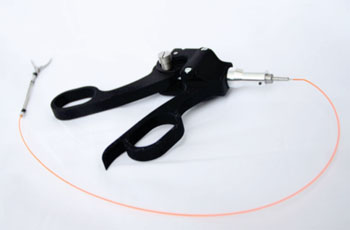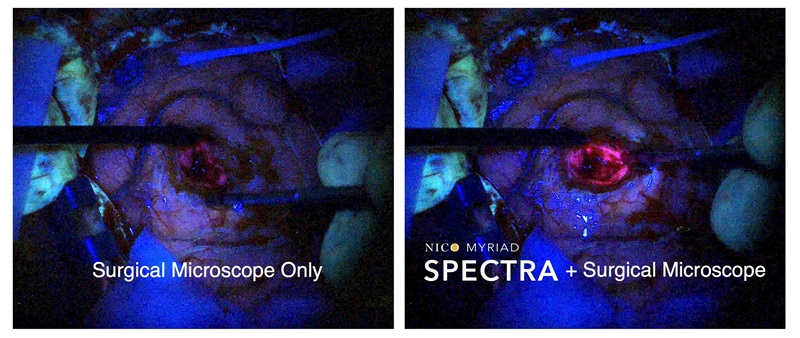Hydraulic Assistance Facilitates Endoscopic Procedures
By HospiMedica International staff writers
Posted on 15 Oct 2014
A novel hydraulic control system for endoscopes could provide added support and sensitivity during minimally invasive surgery (MIS) and biopsy procedures. Posted on 15 Oct 2014
Developed by researchers at the Fraunhofer Institute for Manufacturing Engineering and Automation (IPA; Stuttgart, Germany), the new hydraulic instruments are designed to substitute for traditional mechanical transmission, which is based on a Bowden cable. A plastic tube filled with a sterile, biocompatible fluid—based on medicinal white oil—is used in place of the wire cable. To control the attached instruments and orient the tip of the endoscope, the surgeon manipulates a hydraulic cylinder or robotic muscle that exerts the required pressure to compress the fluid, pushing it through the hydraulic tube onto a second, spring-mounted cylinder.

Image: Hydraulic instruments support surgeons when working with endoscopes (Photo courtesy of Fraunhofer IPA).
The advantage of the system is its lower frictional loss and higher gripping force of up to 50 Newtons. According to the researchers, the particular strength of such hydraulically actuated instruments is the efficiency with which power can be transmitted to the distal tip, especially in the case of needing to navigate a meandering rather than straight insertion path, such as through the small intestine. This also allows the use of more flexible feed lines, with very small diameters and a low bending radius.
The researchers are currently building a hydraulically actuated endoscopic instrument with an outer diameter of no more than three millimeters, which could be ideally suited for use in natural orifice transluminal endoscopic surgery (NOTES), during which the surgeon operates through a natural body opening, thus leaving no scars. The system, which the researcher likes to compare with the hydraulic brakes on a mountain bike, also offers the option of connecting a pump to generate the pressure needed to dissect or remove precise areas of tissue.
“The movement of the wires inside the Bowden cable generates friction and hence a loss of force. Only a small proportion of the force applied actually reaches the tip of the instrument, making it difficult for the surgeon to manipulate the tissue precisely,” said engineer Timo Cuntz, of the IPA Project Group for Automation in Medicine and Biotechnology (PAMB). “Instruments with hydraulic force transmission have demonstrated promising results in our tests; they allow the surgeon to carry out much finer movements.”
The basic control mechanism of an endoscope, the Bowden cable, which is similar to a bicycle brake cable, has barely changed since the earliest days of endoscopy. The cable demands dexterity and physical strength to deflect the tip of the endoscope, as does the manipulation of the miniature pincers, clamps, or scissors for MIS, which are also controlled mechanically.
Related Links:
Fraunhofer Institute for Manufacturing Engineering and Automation












.jpg)

